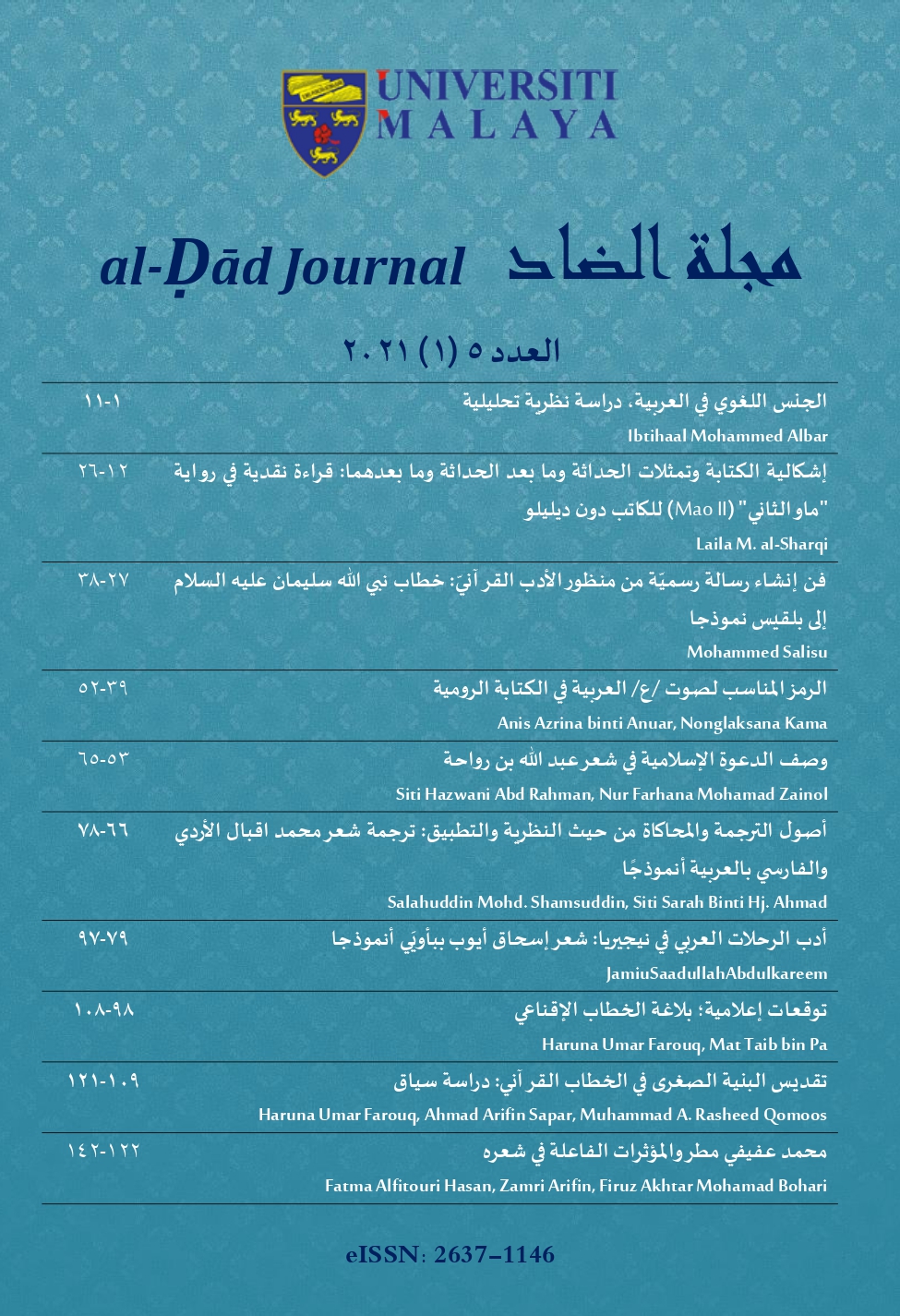Linguistic Gender in Arabic, a Theoretical and Analytical Study. Linguistic Gender in Arabic
Main Article Content
Abstract
This study aims to discuss the phenomenon of masculinization and feminization in Arabic. It seeks to explore the syntactic features that distinguish masculinization and feminization; and their reflections on old Arabic dialects and Qur’anic modes of recitation. Moreover, the study examines the social dimension of the phenomenon of masculinization and feminization, and the effect of the linguistic gender on the Arabic sentence structure. Using the descriptive approach, the syntactic theory confirms that a significant distinction exists between the masculine and feminine references in many syntactic categories such as demonstratives, relative pronouns and verbal predicates. Grammarians’ perception of masculinization as a source, and feminization as a subdivision is firmly rooted in the Arabic culture; emanating from the belief that the masculine is the original creature. Grammarians, therefore, posit that the masculine does not need markers, unlike the feminine. Qur’anic modes of recitation differed in dealing with this phenomenon depending on the reference of the pronoun. Grammarians have employed the rule of meaning to make sentences agree with the masculinization and feminization rules.
